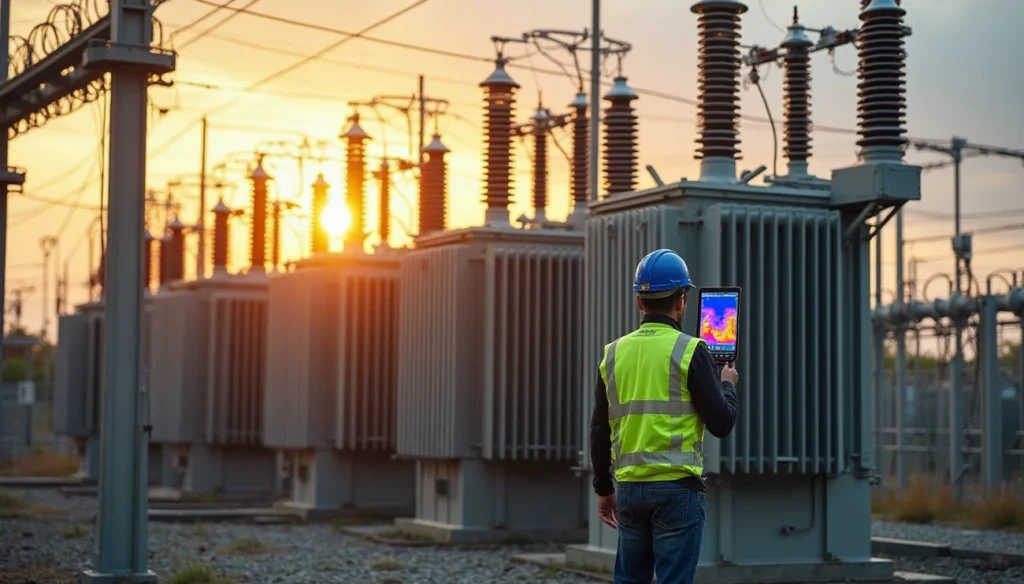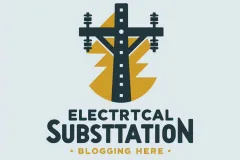
Why Substation Faults Happen-Substation faults pose significant challenges across the 55,000 substations operating throughout the United States. When these critical infrastructure components fail, the consequences can be far-reaching, affecting both urban and industrial power consumers with substantial economic and social impacts. As experts in the field, we understand that equipment failure in electrical substations often manifests through warning signs such as frequent circuit breaker tripping, fuse blowing, and concerning overheating issues.
Electrical substations serve essential functions in our power grid, transforming voltage levels between high transmission voltages and lower distribution voltages. Unfortunately, these complex systems contain numerous components vulnerable to failure, including transformers, distribution boxes, switches, cables, and circuit breakers. These critical components can deteriorate due to aging, insufficient maintenance, electrical overloads, or unexpected power surges. Additionally, insulation breakdown represents a particularly serious concern, not only leading to equipment failure but also creating significant safety hazards. Therefore, understanding the warning signs and implementing preventive measures is crucial for maintaining reliable power distribution and preventing costly downtime.
Common Causes of Substation Faults
Electrical substations fail for numerous reasons, with equipment age being a primary factor. Many U.S. power transformers exceed 40 years of service, well beyond their intended 25–30-year design life [1]. This aging significantly increases the risk of catastrophic failure through insulation breakdown and mechanical fatigue. Environmental conditions also contribute substantially to substation faults. Research demonstrates that pollution on electrical insulators ranks among the leading causes of failure in substations exposed to high salinity and environmental contamination [2].
Furthermore, maintenance neglect creates serious vulnerabilities. Budget constraints have resulted in significant backlogs of critical upgrades, leaving substations operating with increasingly susceptible components. Moisture represents another on insulation on surfaces. Common moisture sources include ambient air with high humidity, water leaks into the substation, and water in cable trenches.
Mechanical issues account for the majority of circuit breaker failures, rather than electrical problems. These typically manifest as loose joints leading to overheating or arcing. Beyond that, human error remains a significant cause – operating mistakes can damage equipment worth hundreds of thousands of dollars. Ultimately, transformers most commonly fail from overheating, which leads to insulation failures. Moreover, contaminated transformer oil can no longer cool properly, accelerating insulation breakdown. Warning Signs Before a Fault Occurs
Recognizing early warning signs of substation faults can prevent costly failures and unplanned outages. First, pay close attention to abnormal noises from equipment. While transformers naturally generate noise during operation, any significant sound change over a short period could signal mechanical or electrical problems. Unusual sounds from coils, coupled with cracked bushings or oil leakage, require immediate action.
Thermal anomalies consistently precede critical equipment failures. Infrared thermal imaging effectively detects hotspots or irregular heat patterns in components like transformers, circuit breakers, and insulators. These thermal indicators often reveal loose connections, overloaded circuits, or failing components before they lead to complete equipment breakdown.
Vibrations represent another crucial indicator, as resonant vibrations of current-carrying conductors can cause fatigue hardening and subsequent breakage. Both low and high-frequency vibrations may indicate underlying issues, with sudden spikes suggesting misalignment or imbalance.
Frequent circuit breaker tripping warrants immediate investigation. Warning signs include breakers that are hot to touch, burning smells, or visible damage. Indeed, most circuit breaker failures stem from mechanical rather than electrical issues.
Voltage fluctuations, especially flicker (manifesting as light intensity variations), indicate potential substation problems. Meanwhile, corrosion degrades structural integrity and interferes with electrical conductivity, potentially resulting in accidents and equipment failure. Regular monitoring of these warning signs enables timely intervention before minor issues escalate into major substation faults.
How to Prevent Substation Faults in 2025
Preventing substation faults in 2025 requires a comprehensive approach that integrates advanced technology with traditional maintenance practices. With 70% of grid transmission lines and transformers now exceeding 25 years of age, proactive strategies are essential for reliable power distribution.
The industry trend has shifted toward assessment-based predictive maintenance programs. This approach implements planned evaluation of substation components to improve reliability and extend overall service life. Advanced monitoring systems using temperature sensors, vibration detectors, and gas analyzers now enable real-time fault detection. Consequently, these technologies help operators identify mechanical issues like misalignments or loose connections before they escalate into major faults.
Cybersecurity has become a critical aspect of substation reliability. Since interconnected digital systems have introduced vulnerabilities previously limited to IT networks, comprehensive security architectures following the defence-in-depth principle are vital. This includes restricting applications and ports to minimize attack surfaces.
Employee training remains fundamental since lack of knowledge constitutes one of the greatest risks workers face. Staff trained to recognize hazards can focus on improved maintenance awareness and prevention. Hence, developing comprehensive training programs covering equipment operation and safety protocols significantly reduces the likelihood of human error causing substation faults.
Regular uprating assessments, combined with protective device maintenance and advanced thermography monitoring, create a robust foundation for substation fault prevention in 2025.
Conclusion
Substation faults represent a critical challenge for power grid reliability throughout the United States. After examining the multiple factors contributing to these failures, we can see that aging infrastructure, environmental factors, and maintenance neglect pose the greatest threats to operational stability. Most importantly, the ability to recognize early warning signs such as abnormal noises, thermal anomalies, and unusual vibrations provides power professionals with valuable opportunities for intervention before catastrophic failures occur.
Prevention strategies must evolve alongside the aging power infrastructure. Therefore, assessment-based predictive maintenance programs should become standard practice rather than optional approaches. These programs, coupled with advanced monitoring systems, allow teams to detect potential issues before they escalate into major faults. Additionally, cybersecurity measures deserve equal attention as physical maintenance, especially as substations become increasingly connected through digital systems.
The human element remains essential despite technological advances. Consequently, comprehensive staff training programs covering equipment operation, safety protocols, and hazard recognition significantly reduce error-related faults. Meanwhile, regular condition assessments of critical components help extend their service life beyond intended design parameters, a necessity given the aging state of our national power infrastructure.
Substation reliability depends on a multifaceted approach combining technological solutions with human expertise. Though aging infrastructure presents ongoing challenges, proper monitoring, maintenance, and staff training can dramatically reduce fault occurrences. The economic and social costs of substation failures make prevention not merely advisable but essential for maintaining the reliable power distribution systems our society depends upon. Undoubtedly, the future of power distribution relies on balancing technological innovation with fundamental maintenance practices to ensure substations continue functioning as the reliable backbone of our electrical grid.
Article written by
Iris Henry
I am skilled in all aspects of web design, from planning and development to design and testing. I also have experience in web development technologies.

